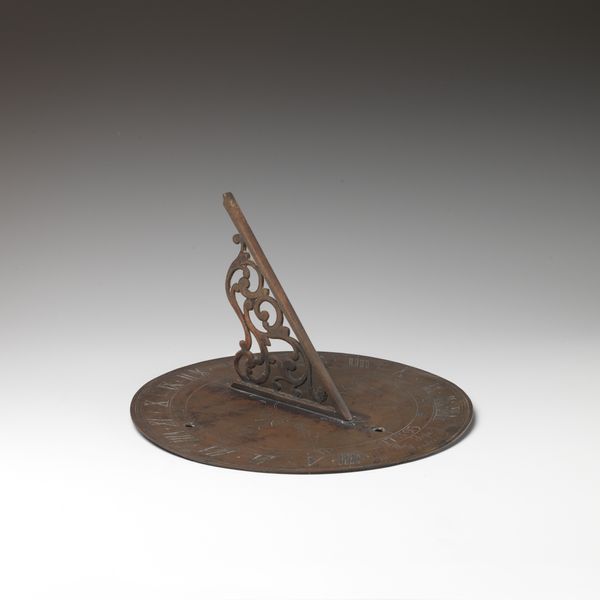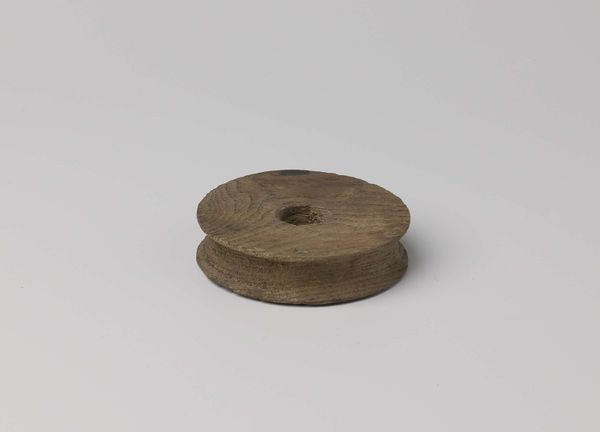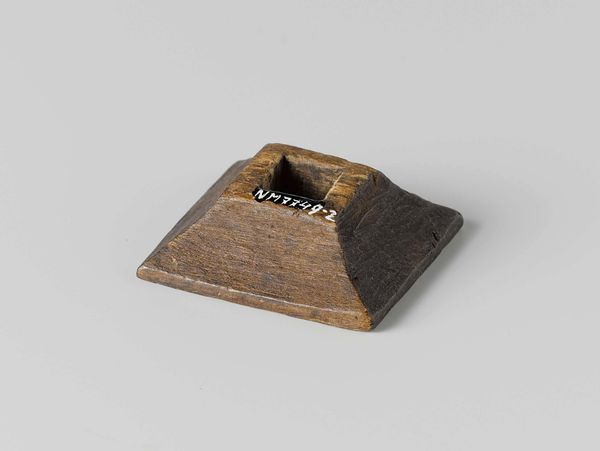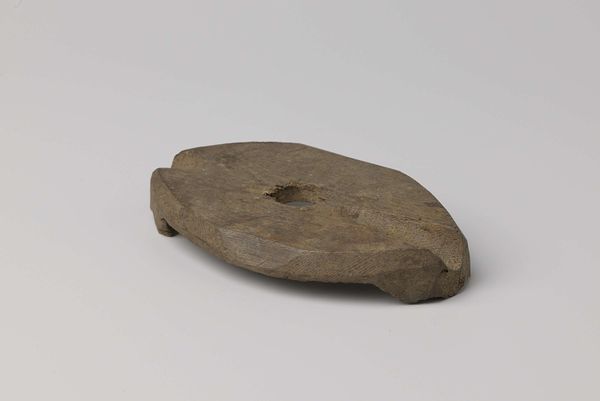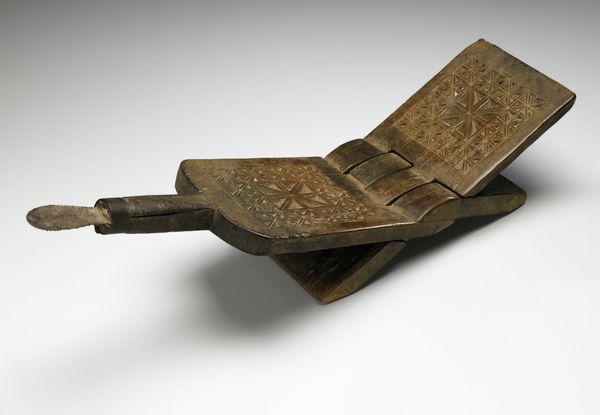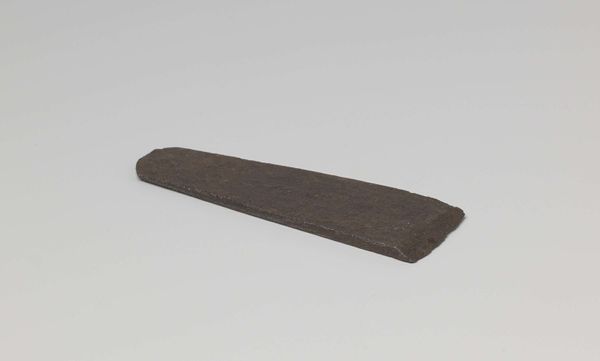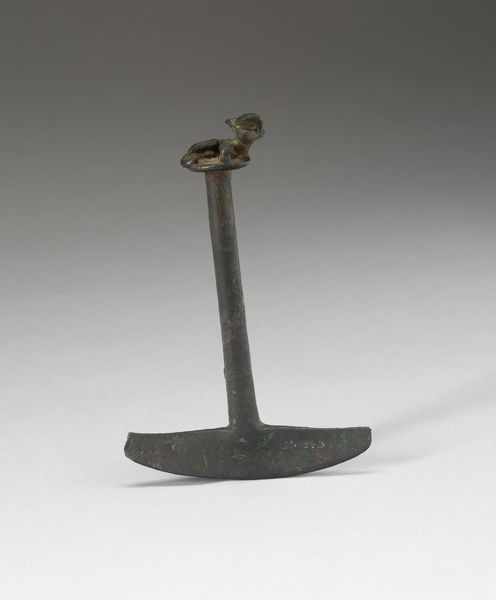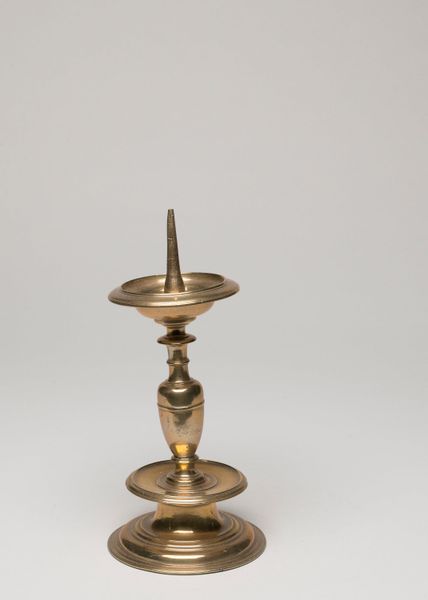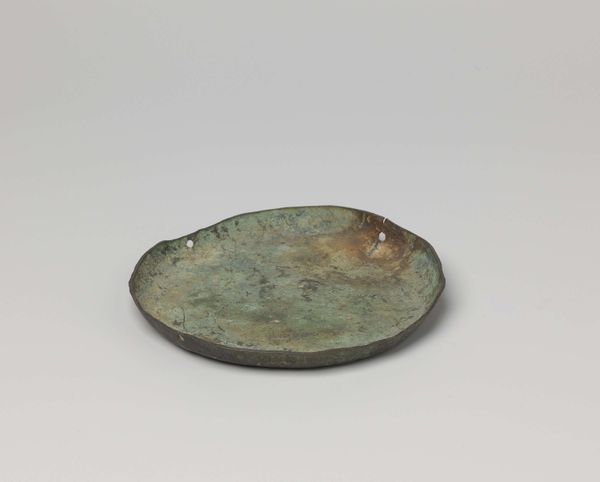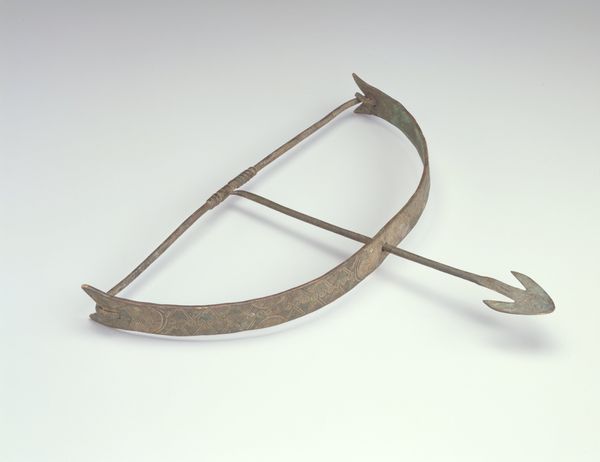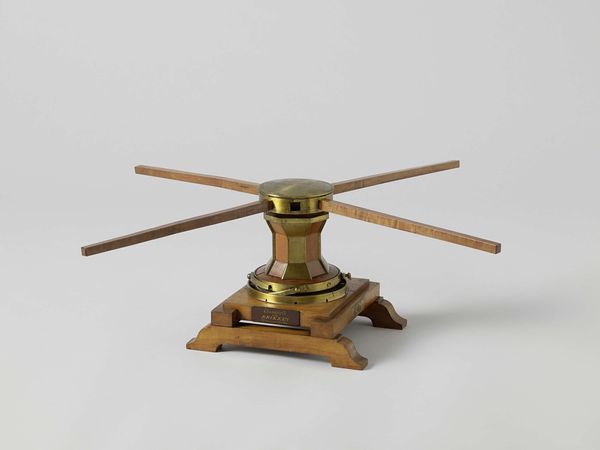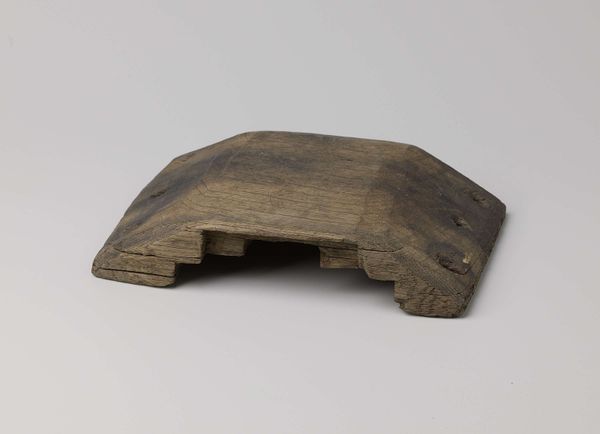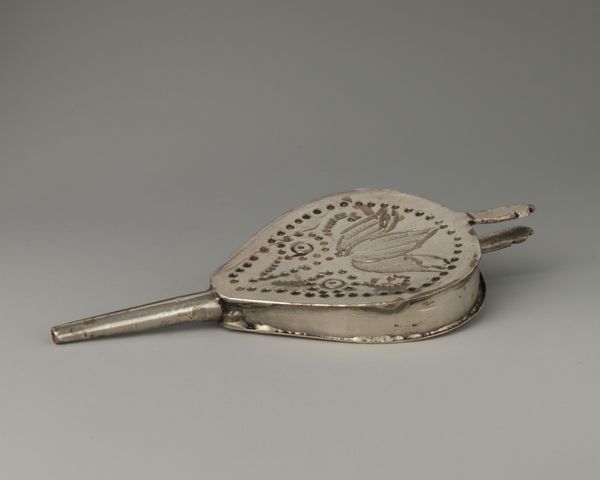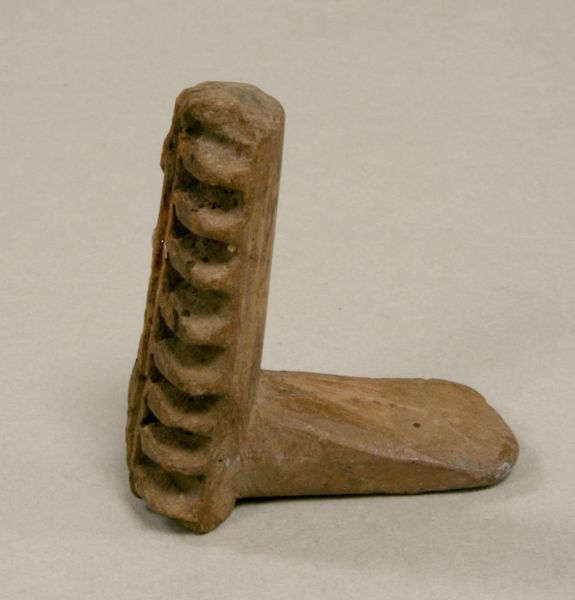
brass, metal, sculpture
#
brass
#
metal
#
11_renaissance
#
geometric
#
sculpture
#
decorative-art
Dimensions: Overall: 3 3/4 × 7 in. (9.5 × 17.8 cm)
Copyright: Public Domain
Curator: Here we have a rather elegant "Stationary Horizontal Sundial," dating from 1715 to 1725 and likely crafted by a George Davis. Look at the patina on that brass! Editor: It’s so understated. More utilitarian object than striking art piece at first glance, but something about that brassy warmth draws you in. Curator: Exactly. Let’s consider this in its historical context. The sundial speaks to a period grappling with increasingly accurate methods of measuring time. Though it’s decorative art now, it existed in a time where timekeeping itself had significance for agriculture, trade, and religious life. Editor: Brass as a material choice is quite interesting. It represents a mastery over metallurgical processes and a deliberate selection to elevate the function of a common object into a thing of permanence, perhaps luxury, signaling social status. Was Davis a known instrument maker, or were such items commissioned, suggesting broader accessibility of this technology? Curator: It is most likely to have been commissioned. The production of such items was highly specialized. Think of the precision required to engrave the numerals and ensure accurate time measurement, as well as acquiring the metal itself. This suggests that the purchaser was part of the educated gentry with leisure time to appreciate its scientific, practical, and ornamental qualities. Editor: Right, we often overlook the role of the patron in creating these objects, because they had the financial power to engage the specialized labour needed for such precise and artistic manufacturing, and therefore shape taste. Considering this object was displayed, presumably in a garden or a formal setting, what does its materiality communicate about its intended user? Curator: I would say that, apart from signalling technological prowess and economic privilege, sundials held great cultural currency as emblems of reason and harmony. These fit with the Enlightenment sensibilities emerging at the time, an era which was moving from divine influence to objective observation and the beginnings of what would be standardized time and capitalist production. Editor: A beautiful and reflective piece. You know, even now, I would quite like this brass sundial in my garden, precisely to get back in touch with objective observation. Curator: Indeed! A quiet revolt against the tyranny of our glowing screens. An object for reflection, in more ways than one.
Comments
No comments
Be the first to comment and join the conversation on the ultimate creative platform.
